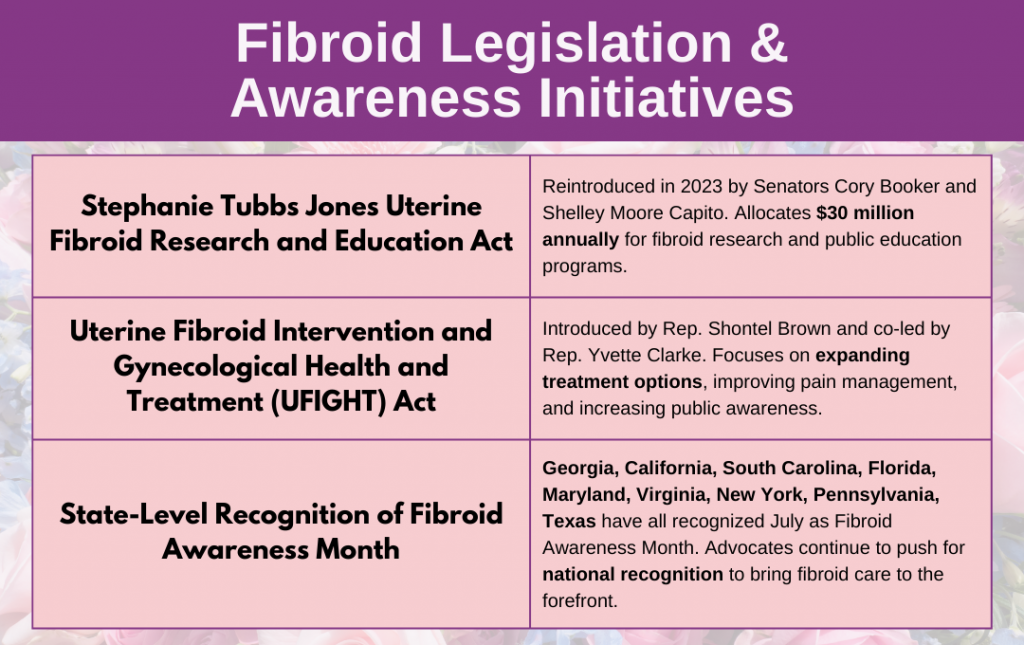
Fibroid Awareness Week is a time to show support for all women who suffer from fibroids. Fibroid Fighters is raising awarenesses about uterine fibroids, a common yet often misdiagnosed and overlooked reproductive condition.
Uterine fibroids are non-cancerous growths within the uterus. Women with fibroids experience symptoms like heavy bleeding, anemia, frequent urination and severe pelvic pain. These symptoms range in severity based on the size and location of fibroids.
Are You at Risk?
While there is ongoing research, the exact cause of fibroids is still unknown. However, certain factors can increase your risk of developing fibroids, such as:
- Early menstruation
- Family history of fibroids
- African American descent
- Elevated estrogen and progesterone levels
- Birth control
- Vitamin D deficiency
The History of Fibroid Awareness Week
The push for greater fibroid awareness has been ongoing for decades, but it wasn’t until advocacy groups and legislative parties stepped in that real progress was made. The weeklong observance was created to highlight the impact fibroids have on women, and to advocate for more research, better treatment options, and policy changes that address the gaps in fibroid care.
Over time, Fibroid Awareness Week has grown into a nationwide movement, sparking conversations, encouraging women to share their stories, and leading to legislative action.

How Fibroid Fighters Supports Awareness Efforts
Fibroid Fighters raises awareness because too many women are left navigating fibroids without the information, support, or treatment they deserve. Through community outreach, education, and advocacy, the organization works to bring attention to fibroids and push for meaningful change in how they’re understood and treated.

Fibroids affect a large population of women but often go unnoticed and undiagnosed. Early detection is key to discussing treatment options and improving your quality of life.
By raising awareness, we empower women to:
- Advocate for themselves
- Explore minimally invasive procedures
- Manage their symptoms effectively
Fibroid Awareness Week is a powerful reminder that we’re not alone. We should pave the way to deconstruct the stigma around uterine fibroids, raise our voices, and find the support we need to manage fibroids effectively.
How You Can Help Raise Awareness
Awareness starts with action, and you can play a role in making a difference. Here’s how:
- Explore Our Fibroid Awareness Tool Kit – This resource provides everything you need to spread awareness, from social media graphics to key facts about fibroids.
- Visit Our Share Your Story Page – Reading personal experiences from other women can be empowering, and sharing your own story can help others feel less alone in their fibroid journey.
- Engage on Social Media – Use your voice to help spread the word about Fibroid Awareness Week by sharing posts, starting conversations, and advocating for change.
For more information and resources, visit our resource center, where you can find info on the latest news, blogs, and fibroid symptom checkers.
We invite you to share your personal journey with fibroids to provide motivation and hope for others.







